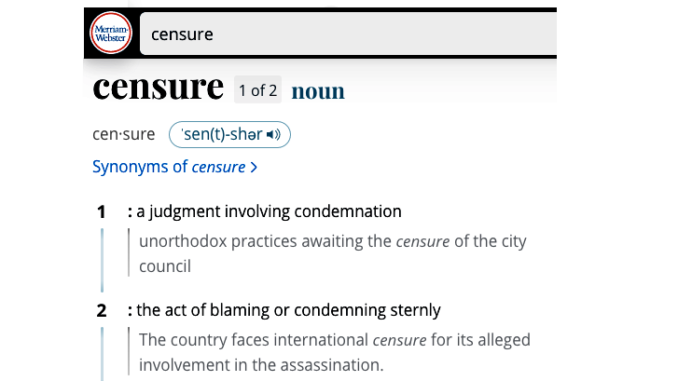
BY BRADEN CARTWRIGHT
Daily Post Staff Writer
Palo Alto council members are trying to ensure that a new policy to discipline each other isn’t wielded for political purposes and is only brought up for egregious actions, like saying very racist things.
“This is not a tool that’s used for trivial things like ‘Oh, I disagree with you one day,’ or ‘You were mean,’ or something like that … not just a difference of opinion or style. It’s gotta be a fairly high bar,” Councilman Greg Tanaka said at a Policy and Services Committee meeting on Tuesday (Aug. 8).
Some ideas to prevent abuse include requiring a super majority vote, allowing a council member to defend his or her behavior and making the discipline process move along as quickly as possible.
“None of this relates to whether we like someone or not. It’s really about their behavior,” Councilwoman Vicki Veenker said on Tuesday.
The discipline process would have two or three tiers. A censure would be the most serious way that a council can express disapproval of one of its members.
Four of 15 cities in Santa Clara County have a censure policy on the books, City Attorney Molly Stump said on Tuesday.
Neighboring cities and government boards haven’t managed to avoid an ugly and drawn out process.
The Los Altos City Council considered censuring Councilwoman Lynette Lee Eng in 2021 for saying she felt unsafe after a Black Lives Matter activist texted her saying her name “will be all over the papers” after she abstained from voting on police reforms.
Allegations of racism flew back and forth for months. Eventually council stopped short of a censure and instead wrote up what it called an accountability policy to deal with future controversies involving statements by council members.
The Foothill-DeAnza Community College District is dealing with the fallout from a censure right now. Board member Gilbert Wong made comments about a Black college president’s skin color in December, and he was censured in March after an investigation.
Wong sued the district last month, claiming that board members shouldn’t have both investigated him and disciplined him.
Palo Alto started talking about a discipline policy in December, prompted by Valley Water’s investigation into Director Gary Kremen.
The investigation, released in October, found that Kremen had publicly lambasted district employees in violation of a board policy prohibiting abusive conduct.
The Palo Alto Policy and Services Committee took a first crack at editing a policy drafted by Stump’s office on Tuesday.
They’ll review another draft at a future meeting before sending a proposal to the full council.
Under the proposed procedure, two or more council members could launch disciplinary action against another council member by sending a memo to the full council outlining specific charges.
“When you do this, you ought to have a pretty good basis,” Veenker said.
The council would discuss the memo during a public meeting and could decide to hire an investigator, schedule a formal disciplinary hearing, issue an admonition, clarify council protocols or do nothing.
“The best way to address issues is as soon as possible at the lowest possible level,” Stump said.
Councilman Ed Lauing said the process should move as quickly as possible to avoid a drawn out saga in the media that hurts all council members, not just the one being censured.
“If this happens, everybody needs this to get over with,” he said.
Council members could be stripped of committee assignments and banned from publicly funded travel.
But that’s about as far as they can go, because they can’t remove each other from office, Stump said.
The policy avoids hypotheticals so it can be used flexibly, Stump said. She pointed out the policy will also be used by future councils.

Why bother. Censure means zero.